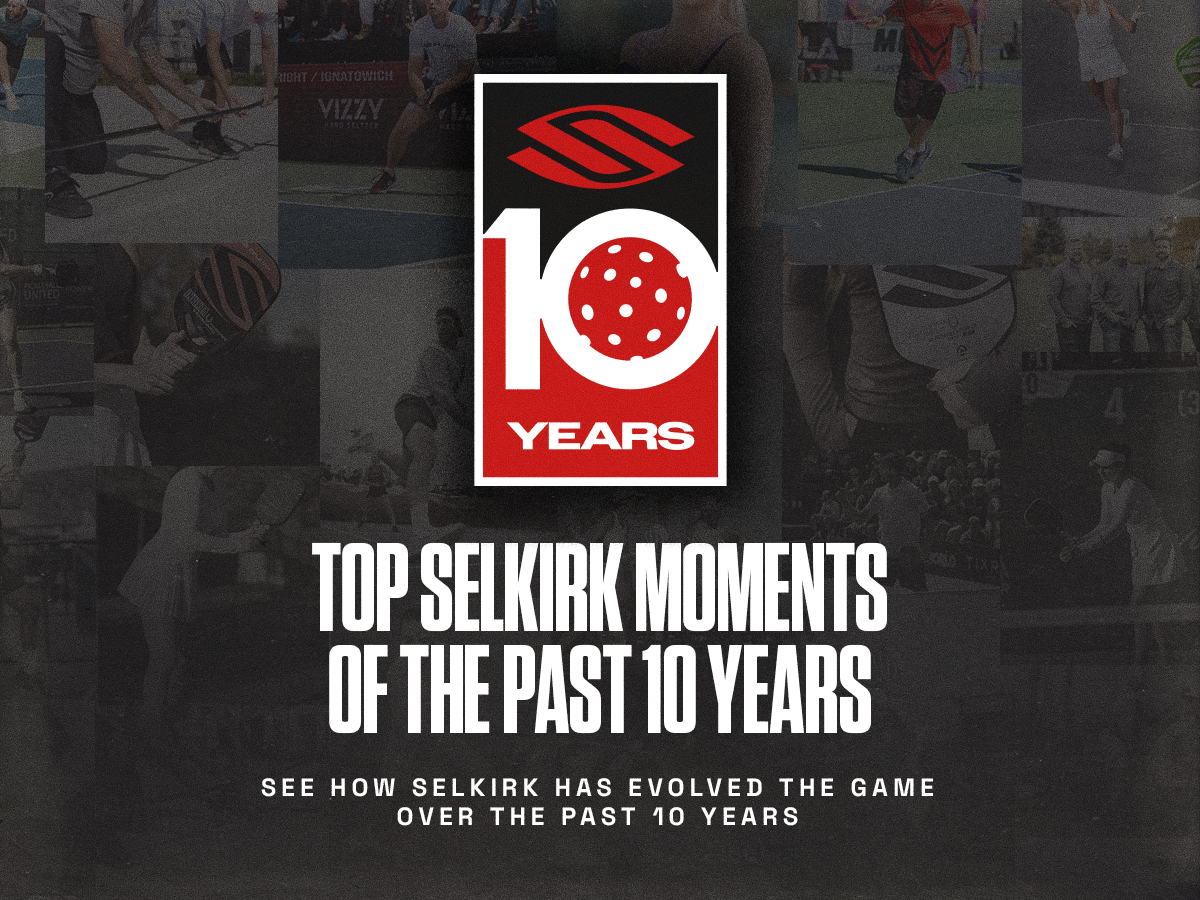
Many new players to the game assume that those with the serve automatically have the advantage.
However, there are many strategies to be employed when hitting a return of serve that can set you and your partner up for success.
In the latest episode of her new “Impactful Efficiency in Pickleball” course on Selkirk TV, professional pickleball manager and coach Athena Trouillot shares strategies for return of serves.
Where to position yourself for the return of serve in pickleball
The ultimate goal of a return of serve shot is to enable yourself to move forward toward the kitchen line where your partner is already positioned. Doing so allows you and your partner to be firmly positioned at the non-volley zone, ready to receive your opponent’s third shot.
When you hit your return of serve, you want to ensure that your body momentum is already propelling you forward. So, it’s important to position yourself well behind the baseline to receive the serve.
If you’re on the baseline and your opponent hits a deep serve, you’ll be forced to back up to hit your return. In this scenario, you’ll likely be hitting your return of serve off balanced, and it will then be difficult for you to shift your backward momentum in time to get set at the kitchen before your opponent’s third shot.
Standing further back from the baseline ensures that no matter what type of serve your opponent hits, your body momentum will be going forward when you hit your return of serve. You will be balanced as you hit the shot and be able to quickly transition to the kitchen afterward.
Pickleball return of serve variations
In earlier days of pickleball, it was important to hit the return of serve deep to the baseline every time. This is because the third shot was almost always a third shot drop, so a deep return of serve made it more difficult for opponents to execute their drop.
Now, however, as players introduce more variations to their third shots, that school of thought has changed.
If you hit your return deep, but it’s high, there’s a good chance your opponent will hit a third shot drive. This immediately puts you and your partner on the defense rather than the offense.
As such, many players are switching to a slice shot for their return of serve. This allows them to hit a deep return but keep it low on the court, forcing their opponents to hit a third shot drop.
How to hit a slice shot
A slice is a groundstroke or volley hit on your backhand side with backspin. To hit your return of serve with a slice, you’ll want your paddle face to be slightly open.
As you swing through, try to make contact with the back bottom of the ball. As you move forward, swing your paddle from low to high in a long U shape. Finish with your arm stretched out in front of you at shoulder height.
As you practice this shot, make sure you are running through the shot, using your momentum to get to the kitchen line.
Download the Selkirk TV app HERE to watch the complete episode and many other Selkirk TV original shows, podcasts, lesson series from the pros, and much more.






















































